Why do we celebrate Lucia? The Lucia celebration in Sweden is a very special and beautiful tradition. But why is it that every year, in a Protestant and secularised Sweden, we choose to solemnly celebrate a Catholic saint?
Innehållsförteckning
Why do we celebrate Lucia?
It is not easy to understand why we celebrate Lucia. It is said that we celebrate Lucia in honour of Saint Lucia, who comes from... Syracuse on Sicily and died in the third century. But how does the Catholic saint relate to the pretzel buns and Staffan?
It is not easy to put the different pieces of the puzzle together. We have tried to summarise the story as best we could, based on information from the Nordic Museum, the History Museum, Expressen and Wikipedia. Don't miss comedian Johan Glans' thoughts on Lucia in a YouTube clip at the end of this post. Fantastically entertaining!

The life and death of Saint Lucia
Stories about St Lucia vary depending on where you read, but it is known that she was born into a wealthy family in the 280s, was a Christian virgin and was martyred. What happened during her short life is partly shrouded in mystery, but according to several accounts, she took a vow of chastity as a young girl, and when her mother promised her to a rich nobleman, she did everything she could to delay the wedding.
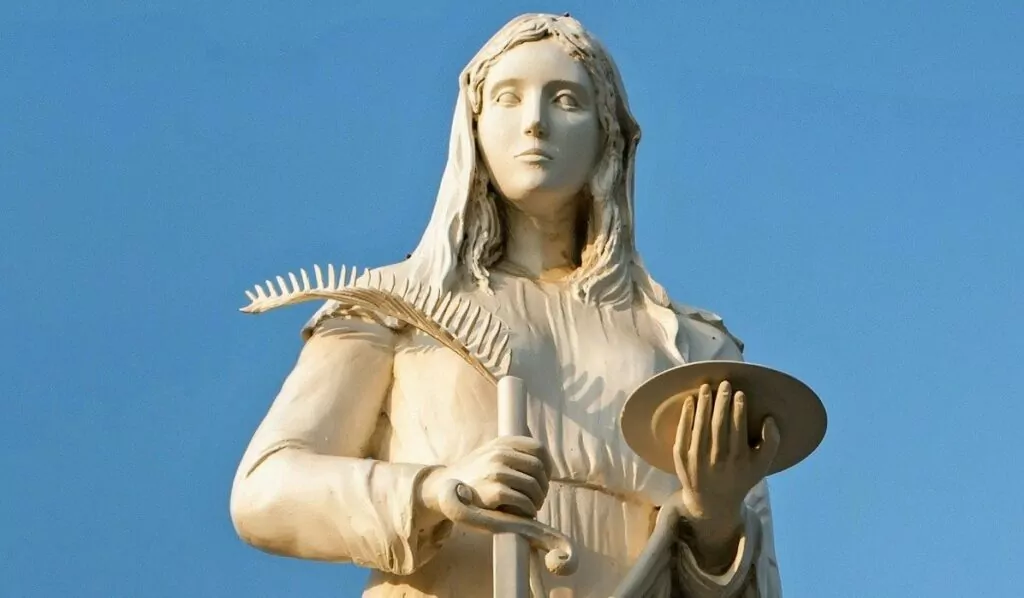
The mother later fell ill, but Lucia managed to cure her through her faith. To thank her daughter, the mother agreed to cancel the planned wedding, which was not appreciated by the nobleman who felt cheated out of the dowry. The nobleman denounced Lucia for her Christian faith, as at the time Christians were persecuted and punished.
Lucia's punishment was to live as a prostitute in a brothel for the rest of her life. She was to be taken to the brothel on a cart drawn by oxen, but the cart froze and could not be moved. They tried to burn Lucia at the stake, but the flames receded. Only when a Roman soldier put a sword through her did she die.
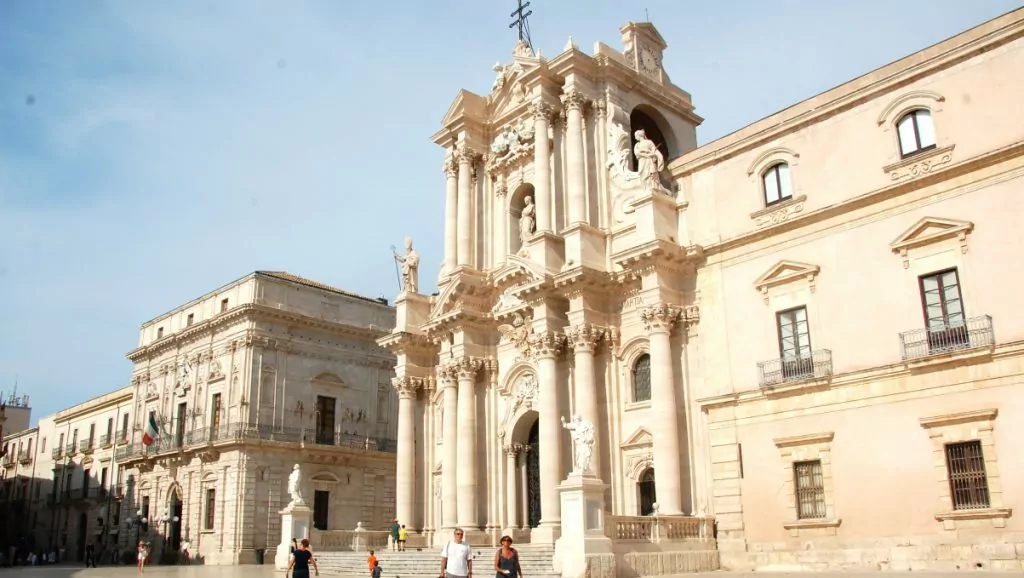
But why celebrate St Lucia in Sweden?
The Swedish Catholic calendar included Lucia as a holiday until the 16th century, but it was not widely celebrated. After the Reformation, when Sweden became Protestant, the saints' ecclesiastical significance virtually disappeared.
So, that we celebrate the saint Lucia right here in Sweden doesn't seem entirely logical. But, as with most traditions, Lucia is a mixture of pre-Christian, Christian and modern customs.

A tradition with pre-Christian roots
13 December is the date on which the winter solstice has been celebrated since 'ancient times'. This date was originally seen as mid-winter, as opposed to midsummer, and represents the pre-Christian roots of the Lucia celebration. The custom of a luminous female figure may have originated with a pagan goddess of light. Lucia was simply an omen of brighter times and longer days.
With the change from the Julian to the Gregorian calendar, the winter solstice was moved to 22 December. Despite this, Lucian Night was still considered the longest for a long time.
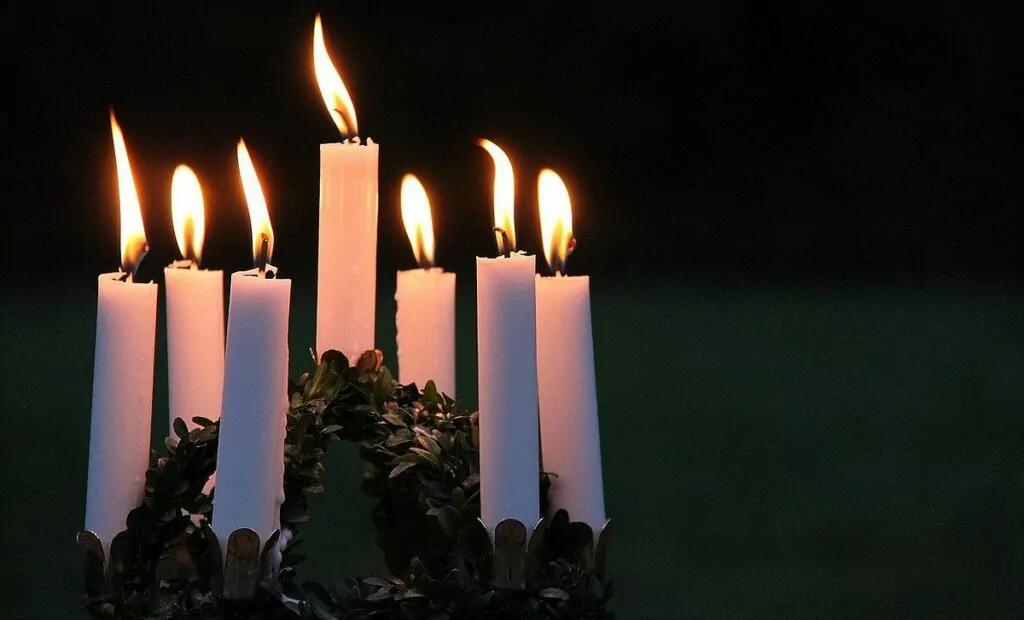
Lucia in popular tradition - a supernatural night
In Swedish peasant society, Lucia's night, 13 December, was considered the longest of the year. The idea of the long Lucia night was linked to the older calendar, but even though the winter solstice was moved in 1753, the idea remained. In the popular imagination, St Lucia's night was dangerous and full of supernatural creatures. On this night, animals could talk and it was not safe to go outside.

Lucia, Lux, Lussi, Lucifer ...
The name Lucia is related to the Latin "lux" meaning light, but in popular tradition the name was associated with Lucifer, the devil. Another figure associated with Lucia is "Lussi", a kind of witch or demonic female creature who came riding through the air accompanied by her companion "Lussiferda". You can imagine the respect for this night!
First known Lucian - from western Sweden
The oldest known white-clad Lucian, according to Nordic Museumis from the year 1764, from a nobleman's home in Västergötland. This Lucia had angel wings on her back and candlesticks in her hands.
It is believed that the Lucia tradition was strongest in western Sweden and then, in the mid-19th century, spread to university towns and organisations around the country. On the Skansen began to showcase the Lucia celebrations in the 1890s.
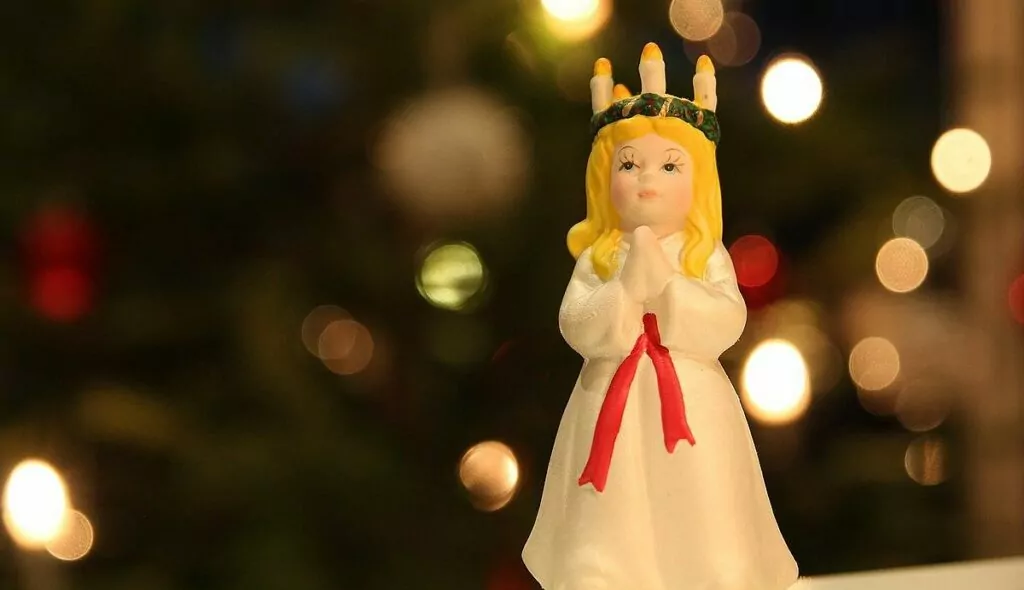
Lucia - also a festive day!
Lucia was not only a scary day but also a day of celebration. In western Sweden the day was known as 'Little Christmas Eve' or 'Lusse Long Night'. During these festivities, people would indulge in food, and maids and farmhands might even be offered meat. Even the animals could get extra food! Sometimes there was the 'Lussebruden' - a joker who dressed up in straw. Or they would simply use a straw doll for everyone to dance with.
Lucia's entourage got bigger and bigger
In the 19th century, Lucia performed either alone or perhaps with one or two companions. As the 'train' moved into the cities, the entourage became larger and larger. Now even bridesmaids and star boys joined in.
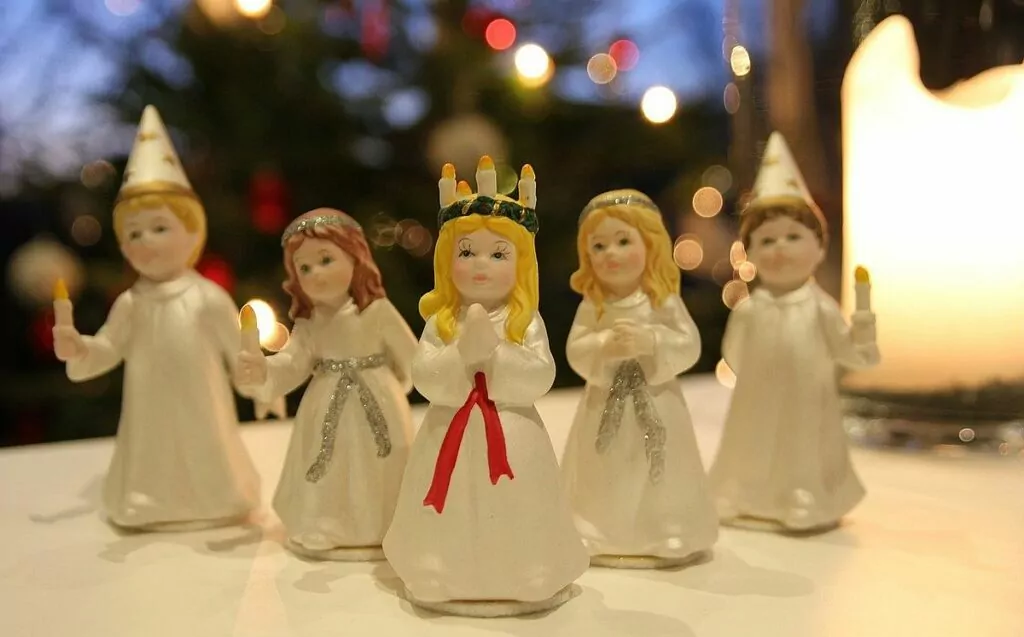
More traditions mixed together
You can also read about many other local customs that throughout history may have contributed to today's Lucia traditions. Here are some examples:
- Up in the morning in Värmland: In a description from the late 18th century, it is said that on Lussedagen, people liked to get up early to eat breakfast and have a little 'rush'. Then they went back to sleep before it was time for breakfast number two.
- Christkindlein in Germany: In German tradition, Christmas presents were sometimes distributed by a female figure dressed in white and holding a chandelier. The woman was sometimes also called "Kinken Jes" and a similar tradition existed among Estonian Swedes in Sweden.
- Youth traditions: During the longest night of the year, it was not uncommon for young people to go around the village singing songs, to make jokes or receive gifts. For example, it was not uncommon to sing the Staffan songs.
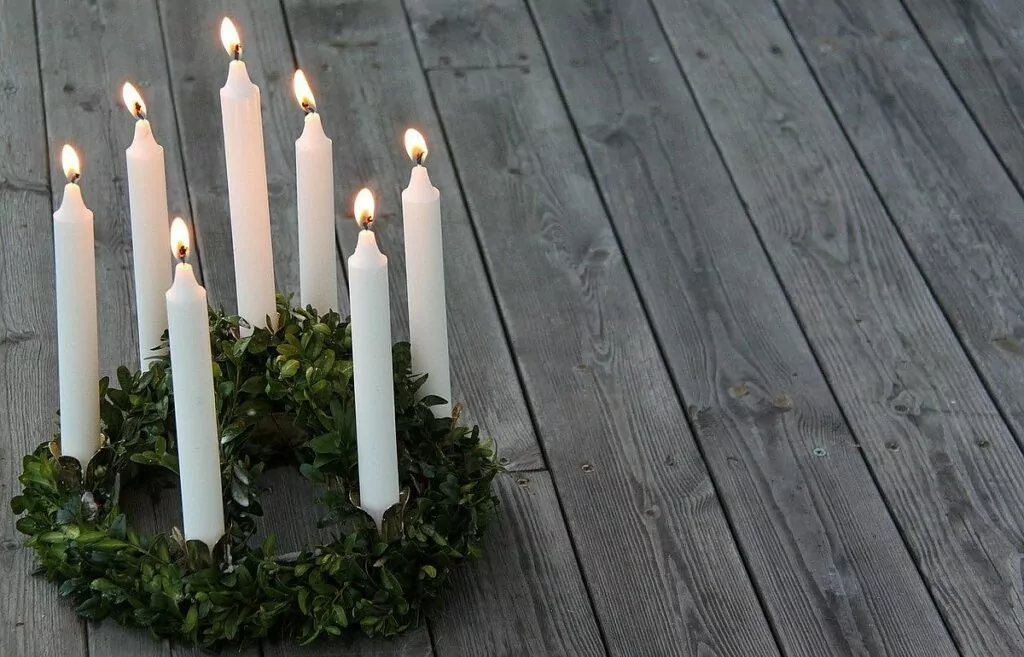
Today's Lucia celebration
The Lucia celebration we recognise today began to develop around the turn of the last century. A special event was when Stockholms Dagblad organised a competition in 1928, where the winning Lucian used electric lights in the Lucia crown. After this, more newspapers joined in, and the Lucia celebration gained more and more visibility in the media.
Nowadays, Luciafika is often served with lussekatter (lussebullar), gingerbread and coffee or mulled wine. The Lucia train includes not only Lucia, bridesmaids and star boys, but sometimes also elves and gingerbread.

So, why do we celebrate Lucia, Mr Glans?
Lucia has both tradition and history. At the same time, it's a bit difficult to understand how the traditions have fallen into place. Take a look at Johan Glans, if you want to find out more about our Lucia traditions and have a good laugh!
Images in the post, except for the image from Syracuse, are borrowed from Pixabay.

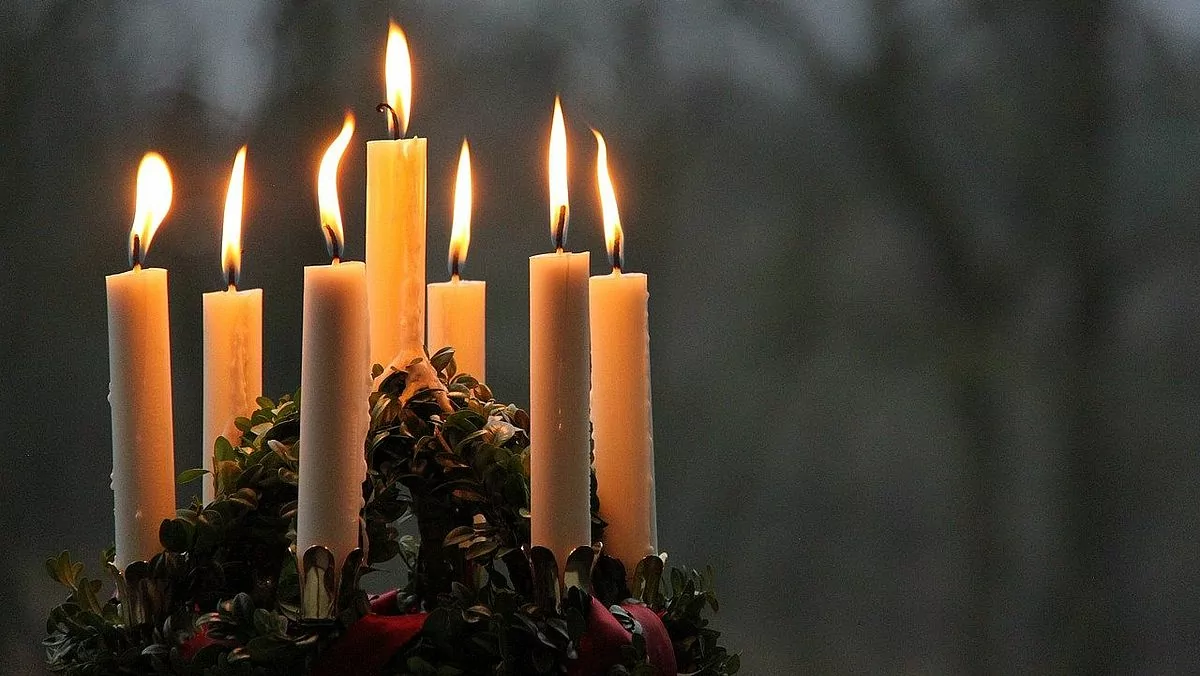









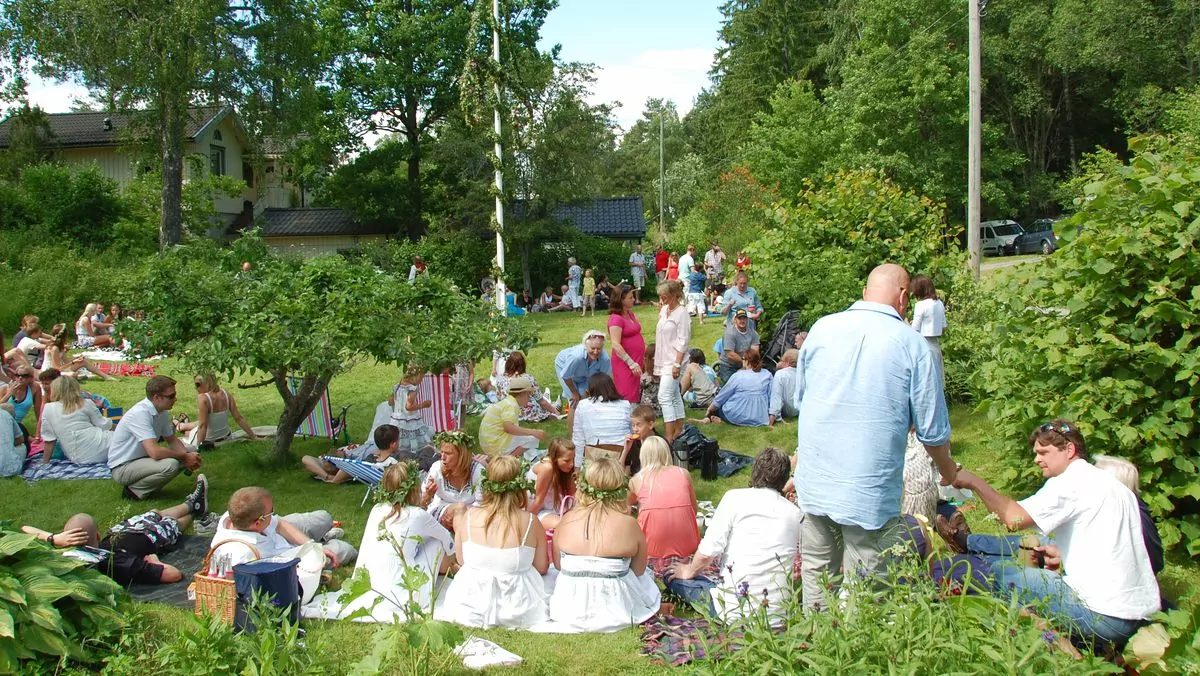
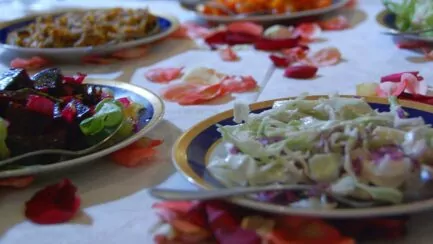





Johanna+i+Skåne says:
Great summary of the tradition! I laugh every time I see this clip (or the one about Easter), Johan Glans really puts his finger on something with our traditions🙂 The best thing about Lucia nowadays is that our son has a birthday (15 years tomorrow!) Hope you have a nice weekend!
12 December 2020 - 9:41
Helena says:
The clip is fantastic! And also the one about Easter, agree! 🙂 Wishing continued nice weekend and birthday!
12 December 2020 - 15:40
BP says:
Good research there!
I knew that Lucia was from Syracuse but not much more. So thank you for that information. For me, it is enough that 13 December was considered the longest night once upon a time. I simply pretend about it this year too;-)
12 December 2020 - 13:51
Helena says:
It was interesting to read on! I find this sort of thing with traditions incredibly fascinating! Good idea to pretend that it's the longest night 😉.
12 December 2020 - 15:41
Lena+i+Wales+och+Spanien says:
Ha, ha, very funny Youtube clip!
As both in the film and as you write, there is not much that is logical about our Lucia celebration, but oh how beautiful and atmospheric it is. And feels so Swedish despite the fact that it is not really that either.
Interesting reading and understand that it was not easy to write as there are so many myths mixed with facts.
Happy Lucia weekend!
12 December 2020 - 14:34
Helena says:
The clip is fun! I also agree that it's a great tradition! And what we have today is very Swedish, even if inspiration has come from different places. Wishing you a nice Lucia weekend!
12 December 2020 - 15:42
Elisabeth says:
The logic isn't quite there, but it's still fun to celebrate. I have picked out a Lucia from my childhood in the early 1950s. It's only natural that she should be there at Christmas. As long as my mum was alive, she was with her, but now she's with us.
12 December 2020 - 18:50
Lena - gott för själen says:
Haha, you manage to figure out the Lucia thing a bit better than Johan Glans. Laughing out loud here. So crazy! How crazy it can be.
Hug Lena
22 December 2020 - 20:23